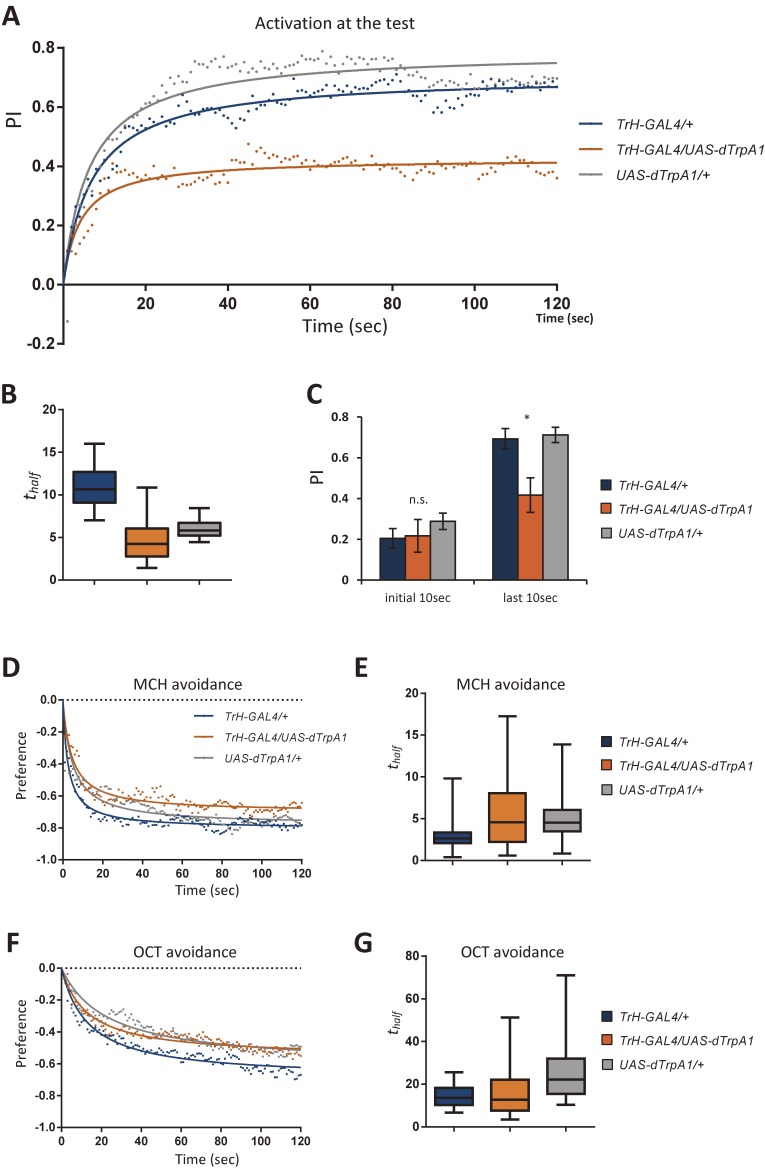Figure 7.
Transient activation of serotonin neurons impairs the choice results. (A) Time course of conditioned odor approach upon thermo-activation of serotonergic neurons. Flies are trained at 24 ℃ and tested at 29.5 ℃. Dots and lines indicate the mean performance indices and the fitted hyperbola functions, respectively (see Materials and methods for details; R2 = 0.920, 0.747, 0.856 for TrH-GAL4/+, TrH-GAL4/UAS-dTrpA1, UAS-dTrpA1/+, respectively). n = 15, 16, 14. (B) The half-maxima time (thalf) of the fitted hyperbola functions (see Materials and methods; n = 1,000). Boxes and whiskers indicate the 25–75% and the 5–95% tiles, respectively. (C) Averaged performance over the first and the last 10 sec of the test. *: P < 0.05, n.s.: P > 0.05; Kruskal-Wallis test followed by the Dunn’s multiple pairwise comparisons. (D and F) Time course of innate avoidance of the odors used in the learning experiments. The response is measured at 29.5 ℃. R2 for TrH-GAL4/+, TrH-GAL4/UAS-dTrpA1, and UAS-dTrpA1/+: 0.865, 0.840, 0.731 (D); 0.910, 0.831, 0.892 (F), respectively. n = 19, 14, 20 (D), n = 23, 25, 27 (F). (E and G) The half-maxima time (thalf) of the fitted hyperbola functions (see Materials and methods; n = 1,000).

